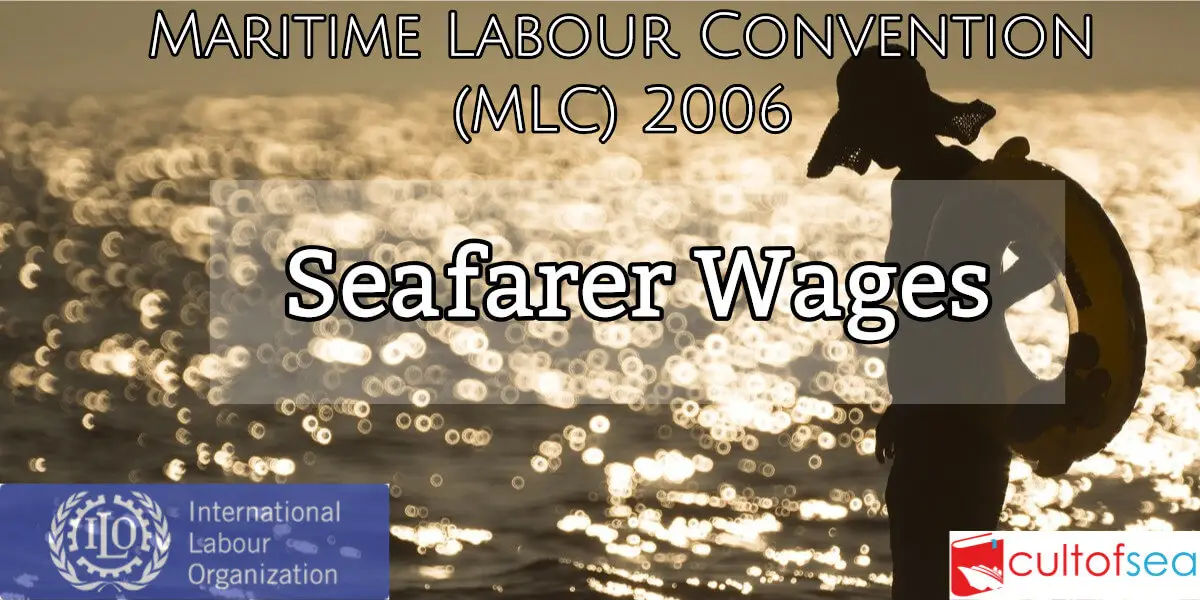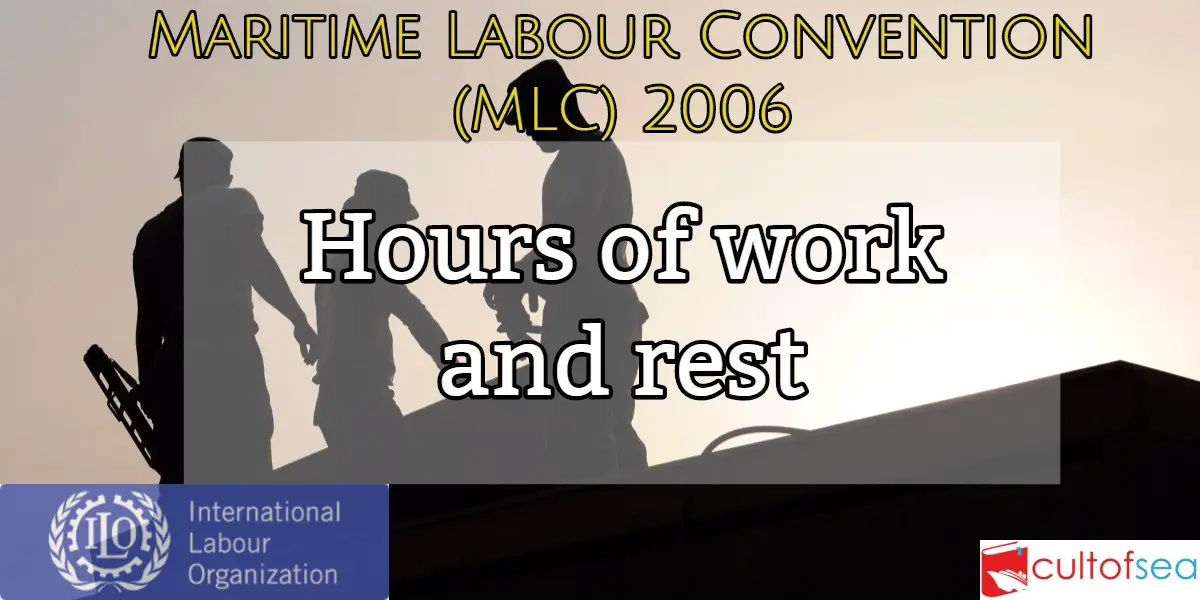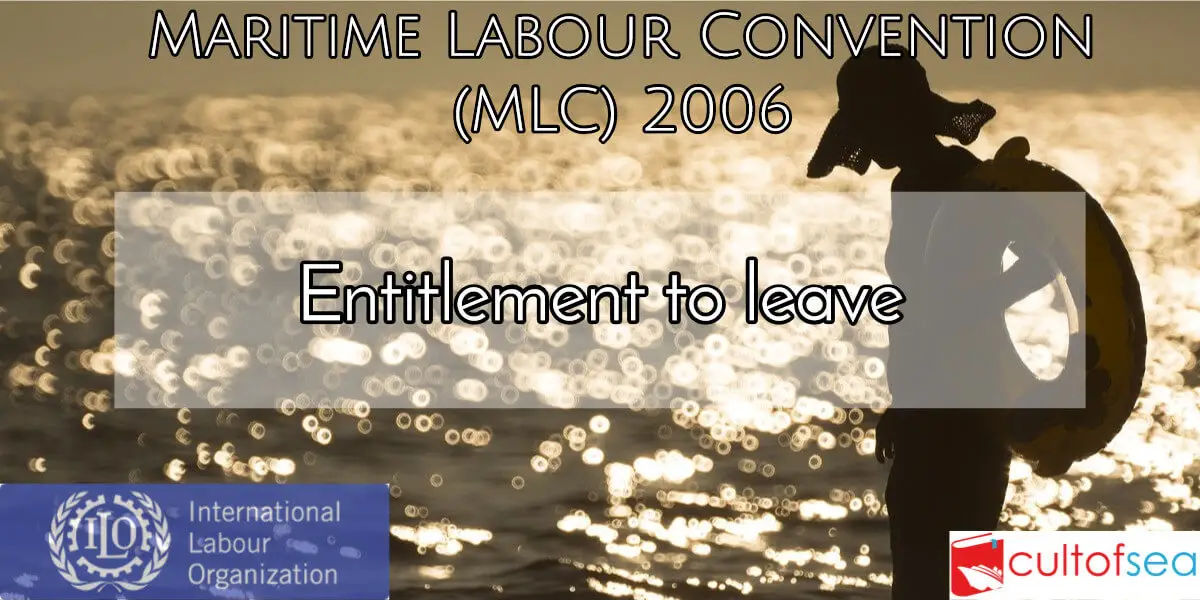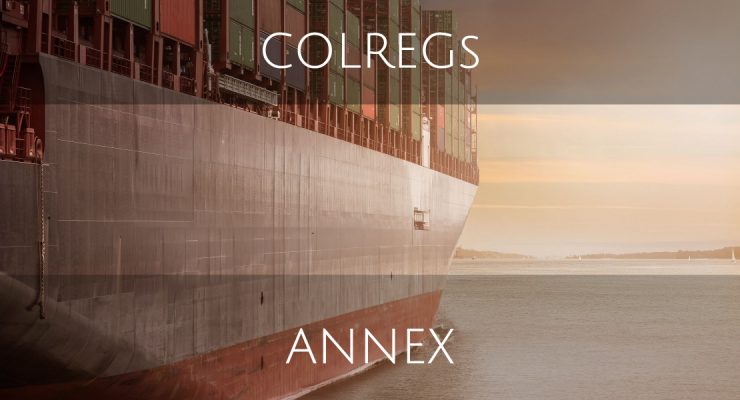Regulation 1.2 – Medical certificate (Minimum requirements for seafarers to work on a ship)Purpose: To ensure that all seafarers are medically fit to perform their duties at sea 1. Seafarers shall not work on a ship unless they are certified as medically fit to perform their duties. 2. Exceptions can only be permitted as prescribed in the Code.Standard – Medical certificate 1. The competent authority shall require that, prior to beginning work on a ship, seafarers hold a valid medical certificate attesting that they are medically fit to perform the duties they are to carry out at … [Read more...]
Archives for November 2015
Wages – MLC 2006
Regulation 2.2 – Wages (Conditions of employment) Purpose: To ensure that seafarers are paid for their services1. All seafarers shall be paid for their work regularly and in full in accordance with their employment agreements. Standard – Wages1. Each Member shall require that payments due to seafarers working on ships that fly its flag are made at no greater than monthly intervals and in accordance with any applicable collective agreement.2. Seafarers shall be given a monthly account of the payments due and the amounts paid, including wages, additional payments and the rate of … [Read more...]
Hours of work and rest – MLC 2006
Regulation 2.3 – Hours of work and rest (Conditions of employment) Purpose: To ensure that seafarers have regulated hours of work or hours of rest 1. Each Member shall ensure that the hours of work or hours of rest for seafarers are regulated. 2. Each Member shall establish maximum hours of work or minimum hours of rest over given periods that are consistent with the provisions of the Code. Standard – Hours of work and hours of rest 1. For the purpose of this Standard, the term: (a) hours of work means the time during which seafarers are required to do work on account of the ship; (b) … [Read more...]
Entitlement to leave – MLC 2006
Regulation 2.4 – Entitlement to leave Purpose: To ensure that seafarers have adequate leave 1. Each Member shall require that seafarers employed on ships that fly its flag are given paid annual leave under appropriate conditions. 2. Seafarers shall be granted shore leave to benefit their health and well-being and with the operational requirements of their positions. Standard – Entitlement to leave 1. Each Member shall adopt laws and regulations determining the minimum standards for annual leave for seafarers serving on ships that fly its flag, taking proper account of the special needs of … [Read more...]
Repatriation – MLC 2006
Regulation 2.5 – Repatriation Purpose: To ensure that seafarers are able to return home 1. Seafarers have a right to be repatriated at no cost to themselves in the circumstances and under the conditions specified in the Code. 2. Each Member shall require ships that fly its flag to provide financial security to ensure that seafarers are duly repatriated in accordance with the Code. Standard – Repatriation 1. Seafarers on ships are entitled to repatriation in the following circumstances: (a) if the seafarers’ employment agreement expires while they are abroad; (b) when the seafarers’ … [Read more...]
ANNEX IV – Distress Signals
1. Need of Assistance The following signals, used or exhibited either together or separately, indicate distress and need of assistance:(a) a gun or other explosive signal fired at intervals of about a minute;(b) a continuous sounding with any fog-signalling apparatus;(c) rockets or shells, throwing red stars fired one at a time at short intervals;(d) a signal made by any signalling method consisting of the group ... --- ... (SOS) in the Morse Code;(e) a signal sent by radiotelephony consisting of the spoken word "Mayday";(f) the International Code Signal of distress … [Read more...]
ANNEX III – Technical Details of Sound Signal Appliances
1. Whistles (a) Frequencies and range audibility The fundamental frequency of the signal shall lie within the range 70-700Hz. The range of audibility of the signal from a whistle shall be determined by those frequencies, which may include the fundamental and/or one or more higher frequencies, which lie within the range 180-700Hz (+/-1%) for a vessel of 20 meters or more in length, or 180-2100Hz (+/-1%) for a vessel of less than 20 meters in length and which provide the sound pressure levels specified in paragraph 1(c) below.The range of audibility of the signal from a whistle shall be … [Read more...]
ANNEX II – Additional Signals for Fishing Vessels Fishing in Close Proximity
ANNEX II Additional Signals for Fishing Vessels Fishing in Close Proximity 1. General The lights mentioned herein shall, if exhibited in pursuance of Rule 26(d), be placed where they can best be seen. They shall be at least 0.9 meters apart but at a lower level than lights prescribed in Rule 26(b)(i) and (c)(i). The lights shall be visible all around the horizon at a distance of at least 1 mile but at a lesser distance than the lights prescribed by these Rules for fishing vessels. 2. Signals for trawlers (a) Vessels engaged in trawling, whether using demersal or pelagic gear, may … [Read more...]
Annex I – Positioning and technical details of lights and shapes
1. Definition The term “height above the hull” means height above the uppermost continuous deck. This height shall be measured from the position vertically beneath the location of the light. 2. Vertical positioning and spacing of lights On a power-driven vessel of 20 metres or more in length the masthead lights shall be placed as follows: The forward masthead light, or if only one masthead light is carried, then that light, at a height above the hull of not less than 6 metres, and, if the breadth of the vessel exceeds 6 metres, then at a height above the hull not less … [Read more...]
Rule 38 – Exemptions
Rule 38 : ExemptionsAny vessel (or class of vessel) provided that she complies with the requirements of the International Regulations for the Preventing of Collisions at Sea, 1960, the keel of which is laid or is at a corresponding stage of construction before the entry into force of these Regulations may be exempted from compliance therewith as follows:(a) The installation of lights with ranges prescribed in Rule 22, until 4 years after the date of entry into force of these regulations.(b) The installation of lights with color specifications as prescribed in Section 7 of Annex I … [Read more...]





